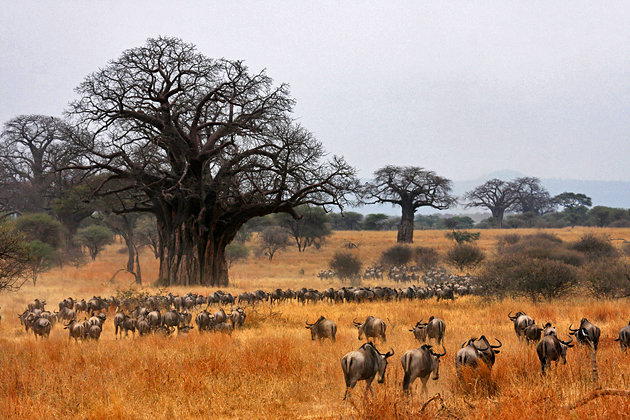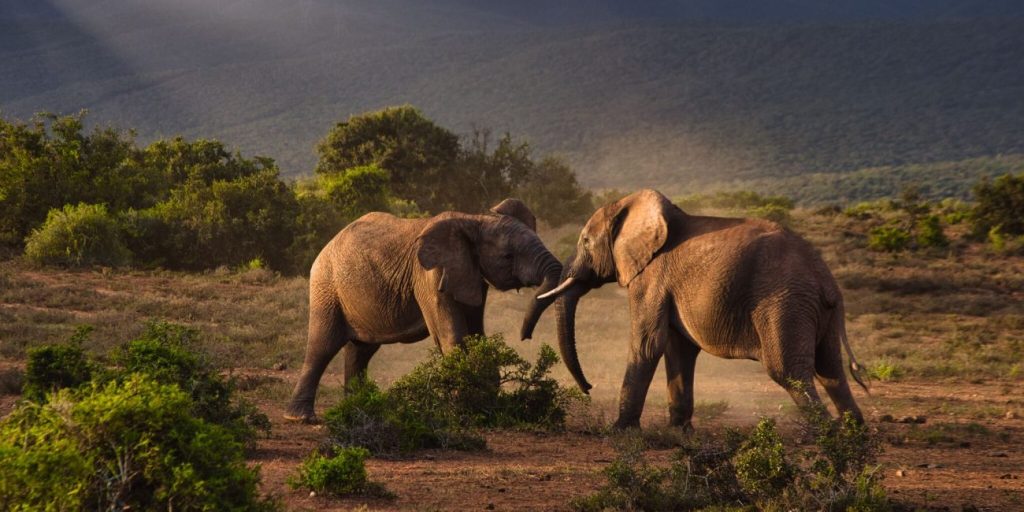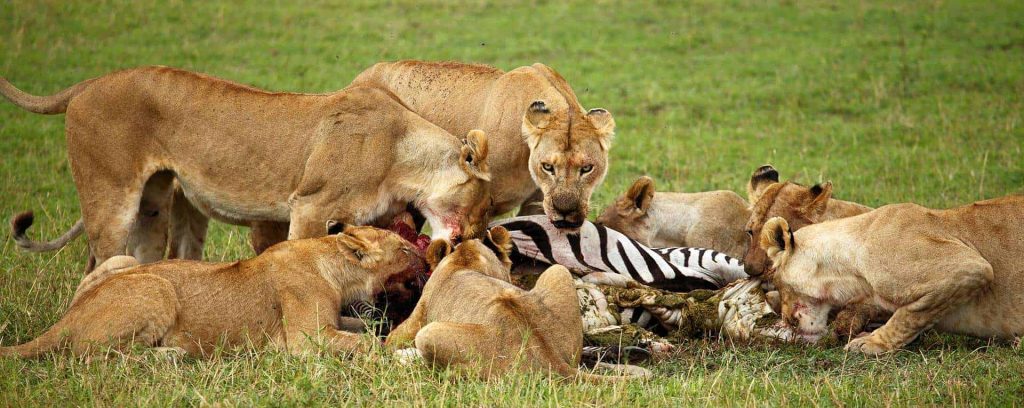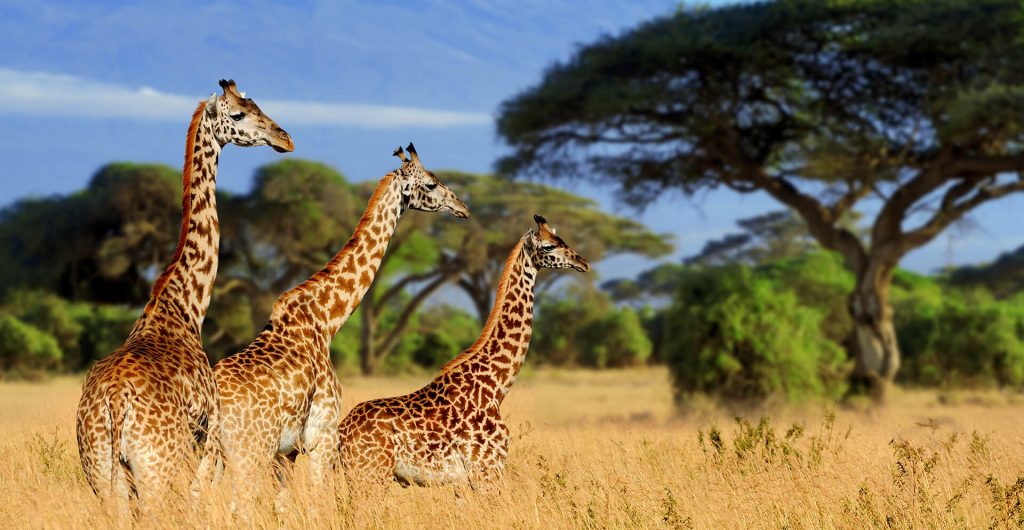The open horizons and abundant wildlife of the Mkata Floodplain, the popular centrepiece of Mikumi, draw frequent comparisons to the more famous Serengeti Plains.
Lions survey their grassy kingdom – and the zebra, wildebeest, impala and buffalo herds that migrate across it – from the flattened tops of termite mounds, or sometimes, during the rains, from perches high in the trees. Giraffes forage in the isolated acacia stands that fringe the Mkata River, islets of shade favoured also by Mikumi’s elephants.
Criss-crossed by a good circuit of game-viewing roads, the Mkata Floodplain is perhaps the most reliable place in Tanzania for sightings of the powerful eland, the world’s largest antelope. The equally impressive greater kudu and sable antelope haunt the miombo-covered foothills of the mountains that rise from the park’s borders.
More than 400 bird species have been recorded, with such colourful common residents as the lilac-breasted roller, yellow-throated longclaw and bateleur eagle joined by a host of European migrants during the rainy season. Hippos are the star attraction of the pair of pools situated 5km north of the main entrance gate, supported by an ever-changing cast of waterbirds.
Here are some interesting facts about Mikumi National Park:
- The park is named after the Mikumi word for “baobab tree”.
- The park is home to over 400 species of birds.
- The park is a popular destination for game viewing, bird watching, and hot air balloon rides.
- The park is located in the Morogoro Region of Tanzania.
- The park is about 283 kilometers (176 miles) southwest of Dar es Salaam.
Here are some tips for visiting Mikumi National Park:
- The best time to visit the park is during the dry season (June-October) when the animals are concentrated around the water sources.
- There are many different ways to explore the park, including game drives, walking safaris, and hot air balloon rides.
- Be sure to pack sunscreen, a hat, and insect repellent.
- Respect the wildlife and stay in your vehicle during game drives.
- Leave no trace of your visit.




